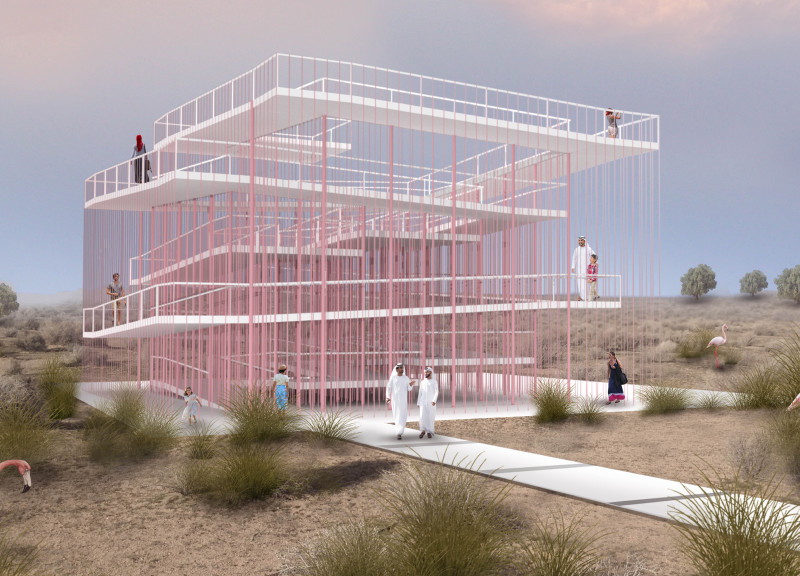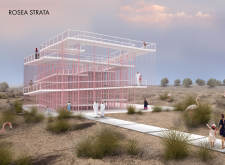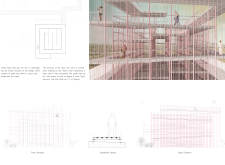5 key facts about this project
The observatory tower is set within a natural landscape that emphasizes accessibility and user interaction. The design concept features a modular ramp system that allows smooth movement for visitors. By combining a zig-zag ramp with a square ramp, the structure enables easy navigation while providing opportunities for varied views and experiences as visitors make their way through.
Design Integration
A key element of the observatory is the use of pink ropes, which serve both practical and aesthetic purposes. These ropes have a variable density, allowing visitors to experience a change as they approach the center of the tower. As individuals get closer, the ropes become denser, offering a different tactile experience. Moving toward the edges, the density decreases, allowing for a more open feel and a varied interaction with the space.
Circulation Dynamics
The circulation path is designed to start with a clockwise direction that later transitions into counter-clockwise movement. This shifting flow not only promotes accessibility but also presents diverse views of the surrounding area. The layout encourages visitors to engage with their environment actively as they travel through the observatory.
Structural Camouflage
Another notable aspect of the design is how the vertical elements are blended into the surrounding features. The poles that support the observatory are intentionally designed to match the ropes, reducing visual interruptions and giving a light appearance. This thoughtful integration helps create a balance between the structure and its surroundings, resulting in a clear connection between the built form and the natural landscape.
The arrangement of these elements encourages a close exploration, guiding visitors to interact with both the structure and the environment, reinforcing the ties between architecture and nature.





















































